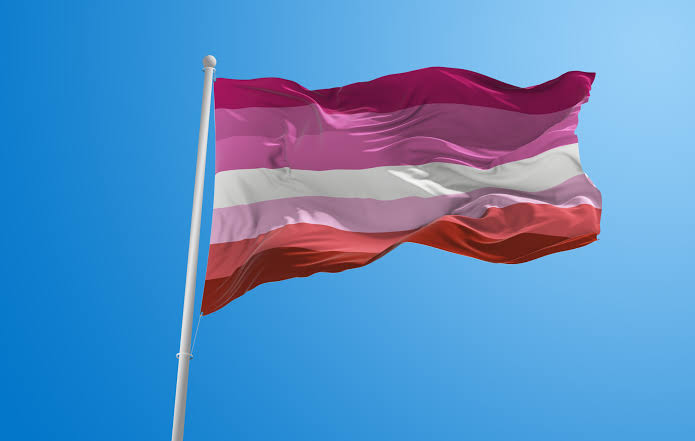Introduction
The lesbian flag is an important symbol of identity, pride, and visibility for individuals worldwide. Over the years, different versions of the flag have been create, each with its own unique colors and meanings. But what does the represent? How did it come to be? And why does it matter so much to the lesbian community?
In this article, we’ll explore the history, meaning, and variations of the . Whether you’re part of the LGBTQ+ community or just curious about its symbols, this guide will give you a clear understanding of this significant emblem.
The History of the Lesbian Flag
Unlike the rainbow flag, which has been widely accepte as the universal symbol for LGBTQ+ pride, the has undergone multiple changes. For a long time, lesbians didn’t have a flag that was as widely recognized as the ones for other LGBTQ+ identities.
Here’s a look at the different versions of the over the years:
1. The Labrys Lesbian Flag (1999)
- The first pride was created in 1999 by graphic designer Sean Campbell.
- It featured a labrys (a double-headed axe), a symbol historically linked to feminist and lesbian strength.
- The flag had a purple background, symbolizing sapphic love.
- While some lesbians embraced it, others felt that it didn’t fully represent the diverse experiences of the community.
2. The Lipstick Lesbian Flag (2010)
- In 2010, a new flag called the Lipstick was introduced.
- It had shades of pink and red with a white bar in the middle and featured a red lipstick kiss on the corner.
- This flag was meant to represent “lipstick lesbians” (more feminine-presenting lesbians). However, it faced criticism for being too exclusive and not representing all lesbians.
3. The Orange-Pink Lesbian Pride Flag (2018 – Present)
- In 2018, a new version of the emerged and became widely accepted.
- This flag features seven horizontal stripes in shades of orange, white, and pink.
- It is often considered the most inclusive version of the today.
Meaning Behind the Colors of the Modern Lesbian Flag
The most commonly used today has seven stripes with different shades of orange, white, and pink. Each color represents a different aspect of lesbian identity:
- Dark Orange – Gender nonconformity
- Light Orange – Independence
- White – Unique relationships and community
- Light Pink – Peace and serenity
- Dark Pink – Femininity and love
Some versions of the flag simplify it to five stripes, but the meanings remain the same.
Why the Lesbian Flag Matters
The is more than just a piece of fabric—it’s a symbol of:
✅ Visibility – It gives lesbians a way to express their identity proudly.
✅ Unity – It helps bring together people from different backgrounds within the lesbian community.
✅ History – It represents the struggles and progress lesbians have made over the years.
For many, waving the flag is a way to feel seen, celebrated, and supported.
How the Lesbian Flag is Used Today
Today, you can see the in various places, including:
🏳️🌈 Pride Parades – People carry the flag during LGBTQ+ celebrations.
🎨 Social Media – Many use it in their profile pictures or posts to show support.
👕 Merchandise – T-shirts, pins, and other items feature the flag’s design.
🏡 Homes and Events – People display the flag to show pride and solidarity.
Conclusion
The lesbian flag is an essential symbol for the community, providing visibility and a sense of belonging. While it has gone through several changes over the years, the current orange-pink design is widely embraced.
Whether you’re a lesbian yourself or an ally, understanding the flag’s history and significance helps support and celebrate the LGBTQ+ community.
FAQs About the Lesbian Flag
1. What is the most common lesbian flag today?
The most common today is the seven-stripe orange-pink flag, introduced in 2018.
2. Why did the lesbian flag change over time?
Different versions were create to better represent the diversity within the lesbian community. The earlier flag were seen as too exclusive.
3. Does every lesbian identify with the lesbian flag?
Not necessarily. Some lesbians prefer other symbols, such as the rainbow flag, while others feel deeply connected to the lesbian flag.
4. Where can I buy a lesbian flag?
You can find the flag on online stores like Amazon, Etsy, and LGBTQ+ merchandise shops.
5. Is the lesbian flag official?
There is no “official” , but the orange-pink version is the most widely recognize and accepted.
6. Can non-lesbians use the flag?
Yes! Allies often display the flag to show support, just like with other LGBTQ+ pride flags.




